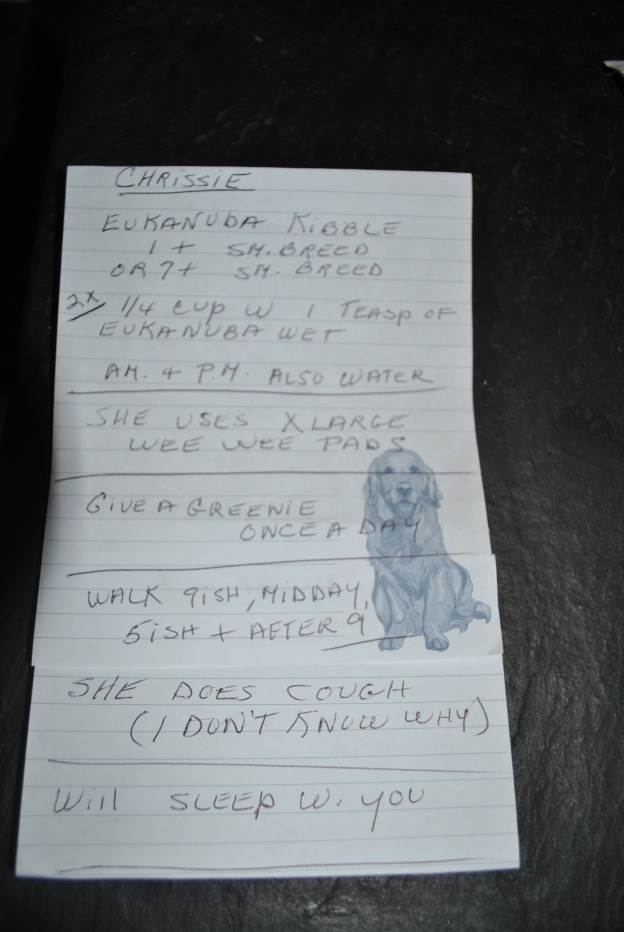There’s a problem in your office that gets in the way of doing what you went into veterinary medicine to do: Make animals well and win the hearts of their caretakers. Your clients are afraid, but not for the reason you think.
What scares clients that you know about
As a veterinarian or technician, you have plenty of conversations with clients that might scare them, at least at first.
They bring their pet in for a simple checkup, and you find a lump. They think their dog has a nosebleed, you suspect cancer. They’re glad their tubby cat has finally lost weight, and you have to tell them it’s diabetes and then explain insulin injections.
You probably have your own special techniques for calming clients when you know they are afraid. Maybe you’ve practiced a Dr. Herriot smile that makes you look wise. Or you have a simple analogy to explain how the brain works. “See, it’s like a lightbulb.” You’ve learned to look for clients’ shoulders to relax when they realize they can pill their cat.
But what about the ones who are going to pieces right in your office? Maybe before you even walk in the room.
What scares clients that you don’t know about
“How can that be?” you ask. You haven’t even looked at their pet, so what are they scared about?
Let’s leave aside the possibility that they came in because they had found something that worried them. And then looked it up on the internet. And asked their Facebook friends what they thought. Assume they were fine till they hit your front door. What could have gone wrong?
Think about off-hand remarks. Overheard complaints. A funny look on the face of one of your co-workers. Or your lengthy silence while you stare into their dog’s eye.
Let me give you an example. Yesterday I went to the dentist for a routine cleaning and partial x-rays. I’m fine with the dentist, but by the time they were done, I needed a neck brace for emotional whiplash.
As we were getting started, I mentioned in passing that my gums were a little sensitive and that a bruisey-looking thing that I’d had for years had gotten swollen last week and was now better. Suddenly they were recommending a full set of x-rays and a quick check by the oral surgeon downstairs. “It could be a dying nerve”, the hygienist speculated as she scurried out of the room. “Dying nerve?”
The oral surgeon, a big middle-aged guy with huge hands, swaggered in, drew on his gloves, and tried to yank my lower lip into the backyard. He jabbed every tender spot and announced it was probably a swollen salivary gland that would take care of itself. “It’s not a tumor except in the broadest sense of the word.” “Tumor?”
“If it gets bigger and really bothers you, we can remove it. Of course with the architecture of your mouth, that would be some surgery.” “Holy cow. The expert thinks this would be ‘some surgery’?” And as he rode out of sight, he tossed off “It’s nothing to lose sleep over.”
Put yourself in my shoes. I came in for a routine event, no drama. But when several professionals looked worried and casually threw around tumors and nerve death, my whole day veered off course like a doomed rocket. It managed to fly straight again for two reasons: 1) The team figured out pretty fast that nothing was wrong; 2) I politely spoke up about how heavy-handed and brusque the consult was. The hygienist acknowledged that it was true and that she’d heard it before.
If your clients speak up about their concerns and ask you questions, you’ll have a chance to clear things up too. But what if they don’t tell you?
What’s the big deal?
A panicking client can’t concentrate on you or make decisions. She’s tuned into the radio station in her head that’s saying, “Run for your life. Martians have landed in New Jersey.”
Clients who feel blindsided by bad news inexplicably refuse to let you do tests. They stall so they can wrap their minds around this potential disaster. If they overhear your staff express curiosity about how this will turn out, your clients seethe because employees seem nonchalant about finding a problem in their pet. They may even feel you manipulated their fears to get them to spend money.
But if you don’t figure out that they are unnerved by something they’ve heard, you won’t know what’s going wrong.
How to fix your clients’ secret fears
Since reading minds is hard, you want to prevent secret fears and intervene if they happen. Here’s how.
- Make your office a calming environment. Use distractions, like music, a TV, or an aquarium to give clients somewhere to focus besides their anxieties.
- If you sense clients are confused, say something like “Let’s pause. Let’s take a break.” Then ask if they have any questions so far.
- Breathe easily as you examine the pet. It will calm everyone in the room.
- Talk as you work, so clients know what you are doing. Incidentally, when clients recognize the time and skill that went into the exam, they are more willing to pay your bill.
- Don’t casually speculate about bad possibilities. Wait till you do at least a brief exam and have some evidence for your assessment.
- Watch what you say where civilians can hear you. Complaints about coworkers, blaming others when you can’t find something suggests this is a badly run place with interoffice drama—not a place you want to trust your pet to.
- At the end of every encounter, review what you did and what the options are. That way, if your clients tuned out for a while to take stock, you have another chance to get through them. If you suspect something you’ve said might disturb them, acknowledge it. “I know this isn’t what you expected when you came in today. It’s a lot to take in. How are you doing with all this?”
If you liked this article, please leave a comment. And if you really liked it, please share the link.
If you’re having client communication problems, Dr. Susan would be happy to meet with you and your staff.








